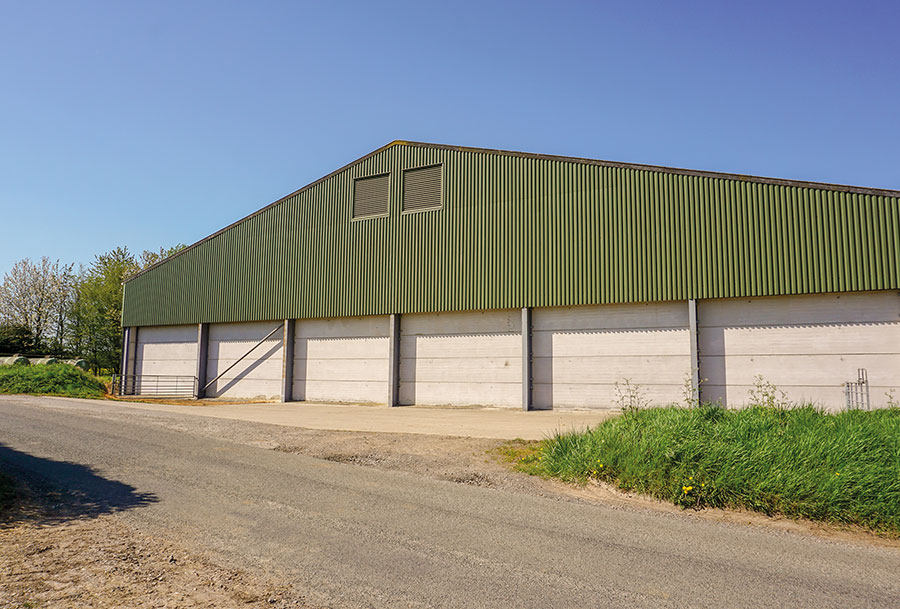What are your health and safety obligations on building projects?
6th March 2024
Farmers and landowners are risking heavy fines and even imprisonment if they fail to meet their legal duties regarding health and safety on building and refurbishment projects. Johnstruct Ltd director, Mark Allen, provides some guidance.

Farmers desperately need to be more aware of the Construction, Design and Management Regulations (CDM) 2015 regulations, and the part that they play. The CDM regulations are in place to protect the safety of ‘construction’ workers and members of the public during building and maintenance works. The regulations were introduced in 2007 and updated in 2015 to reflect the fact that more fatalities tend to occur on smaller construction projects than the larger ones. One fundamental change was to bring the client (farmer/landowner) to a position of legal responsibility.
Who is responsible?
The regulations require the person (you) instructing any work to be carried out to manage it from a health and safety perspective, unless they have officially discharged responsibility to a competent person. But even where this is the case, there needs to be paperwork in place. In the event of an accident, if the Health and Safety Executive cannot find any of the required paperwork then the client can be held responsible. From our experience, many farmers would be held liable for an accident or worse, even if they have had nothing to do with the physical project works. This would be primarily because they have not followed the correct procedures – pleading ignorance will not help your case.
For most projects on the farm, it is important that the farmer confirms in writing who they are appointing to take responsibility for health and safety issues on their behalf. For projects involving only one contractor, this could be in the form of a simple letter which states that you are appointing them to carry out the work and by doing this you have met your responsibilities as the client.
Penalties for failing to comply with the regulations are typically financial, but the HSE will prosecute anyone found to be in breach under criminal law. If negligence is proven, it can result in a jail sentence.
CDM applies to most construction projects including the repair of all buildings on a farm, and any renewable energy projects such as the installation of a biomass boiler, solar panels – and equally, the demolition or dismantling of old buildings, or the taking out of old grain silos or equipment.
The regulation defines different roles and sets out specific duties that need to be carried out by people in each role. The farmer – as the person instructing that the work should take place – is known as the ‘client’ and it is the client’s responsibility to ensure that the work can be carried out, so far as is reasonably practicable, without risking anyone’s health and safety and that welfare facilities are provided. They must also ensure that anyone appointed to carry out work is suitably skilled and experienced and given sufficient time and resources to get the job done.
The regulations make a distinction between commercial and domestic projects. Anyone who has work carried out on their own home is a ‘domestic client’ so responsibilities under CDM regulations default to the contractor they appoint. This means if you call in a plumber to replace plumbing systems in your house they will assume responsibility for their own safety, so long as the job only involves them as a single contractor. If more than one contractor is utilised, it’s a multiple contractor project and duties must be actively transferred to someone else if a farmer wants to help protect themselves.
Work on farm buildings
For any work on farm buildings (new build or refurbishment), the farmer must ensure they have formally appointed a competent person to take responsibility for health and safety issues. For jobs involving multiple contractors, you need to appoint what is known as a principal designer and a principal contractor. The principal designer is not a designer in the traditional sense, but takes responsibility for planning, managing, and monitoring health and safety issues in the pre-construction phase. They also liaise with the principal contactor working on the project during the construction phase. It is possible for the principal contractor to also be the principal designer.
For projects with more than one contractor, written confirmation naming the principal designer and principal contractor is needed. As part of the process, a health and safety file will also need to be created which records useful information to help manage risks, such as fragile roofs, the location of underground services and the nearest place to find medical assistance. It’s important that the farmer provides as much useful information as possible to the principal designer or contractor to enable them to pull all relevant information together.

On larger projects – which are classed as those expected to last 30 or more working days and which will have more than 20 workers simultaneously working at any point, or where the project will exceed 500 person days – the HSE must be formally notified of the project.
Steel frame building company, Johnstruct Ltd. has many years of experience undertaking a wide variety of agricultural and commercial steel frame building and refurbishment projects. It covers East Anglia (Beds, Cambridgeshire, Essex, Herts, and Suffolk) and is offering readers free initial advice regarding the planning of, and the supply and installation of, all aspects of steel frame buildings.

